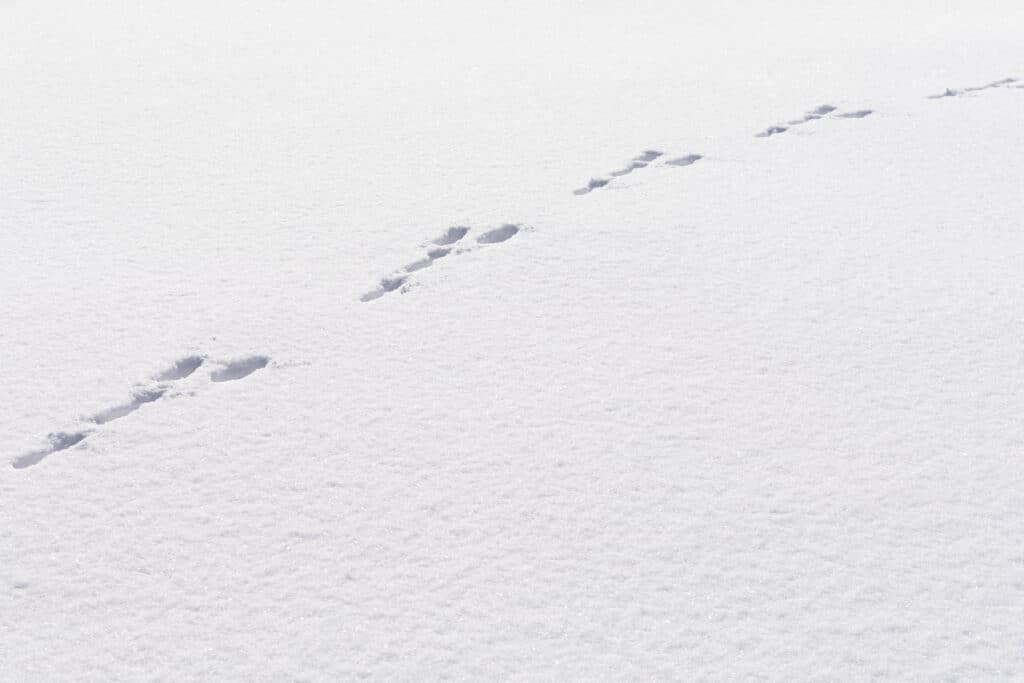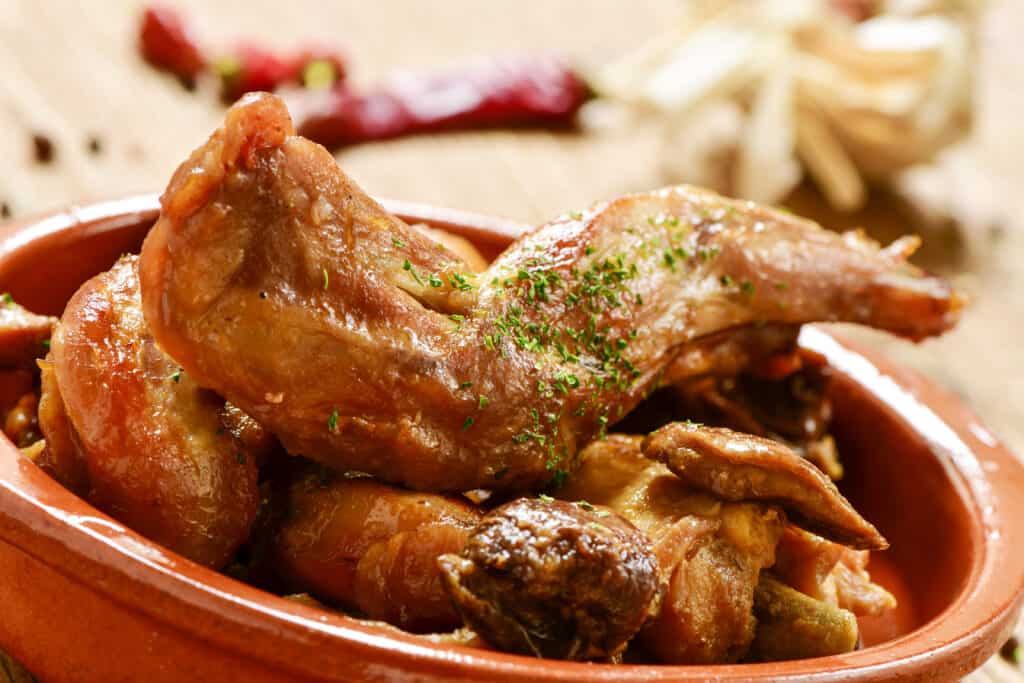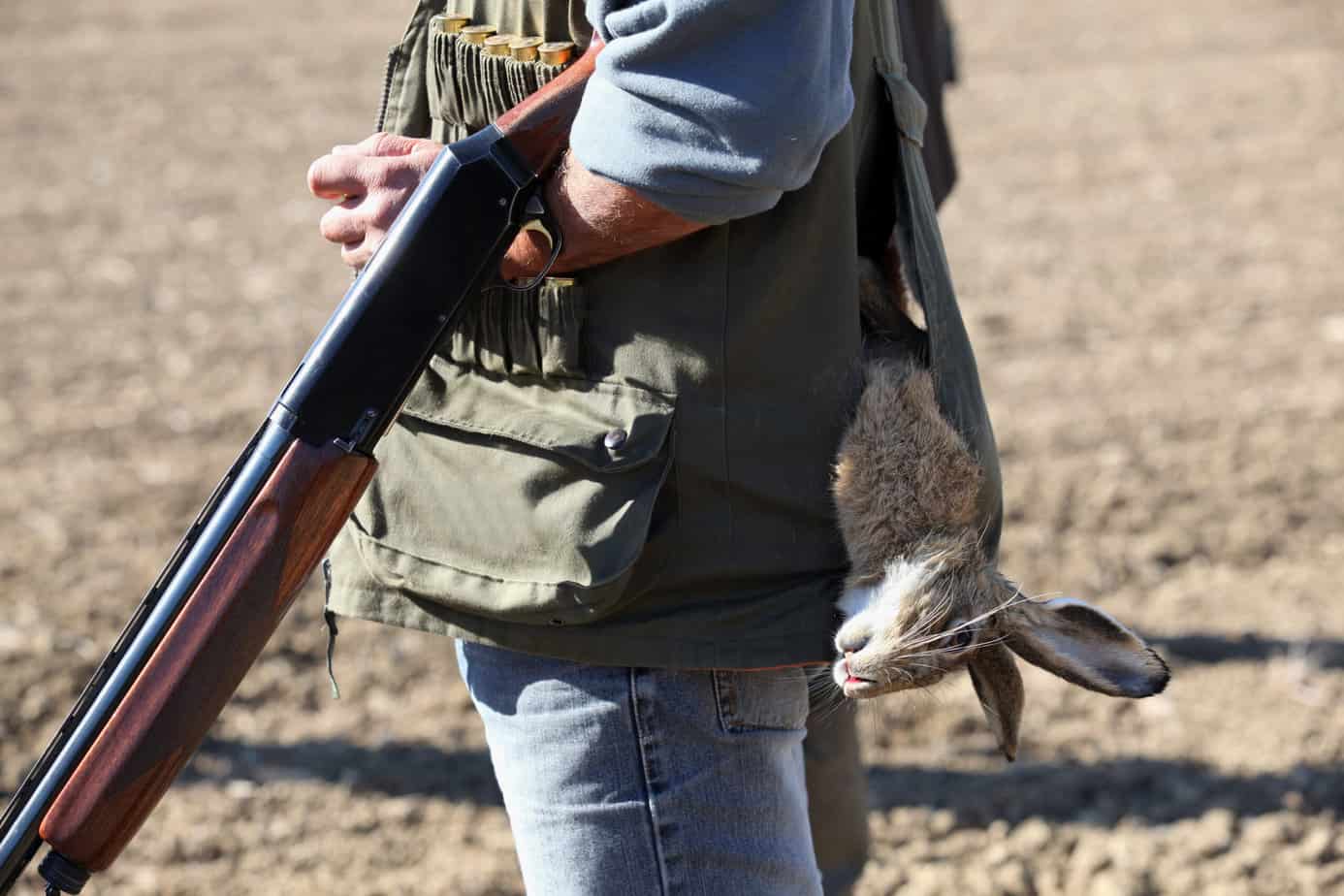Rabbit hunting has always been a popular pastime for both seasoned hunters and beginners alike. It requires a perfect blend of skill, patience, and strategy, making it an engaging and rewarding activity. As someone who enjoys the thrill of the chase and the satisfaction of a successful hunt, I believe that having the right tips and techniques can enhance the overall experience and increase the chances of a successful rabbit hunt.
Over the years, I’ve collected a series of tips that have significantly improved my success when hunting these fast and elusive animals. Throughout this article, I will share with you 10 essential tips that, in my opinion, are key to a successful rabbit hunting experience. From selecting the right gear to scouting the perfect location and mastering the art of understanding rabbit habits, these tips will help you make the most of your time in the field and bring home some delicious wild game for your family and friends to enjoy.
Join me as we dive into the world of rabbit hunting, and keep these tips in mind the next time you hit the field. I’m confident that with a little preparation and the knowledge gained from these tips, you’ll enjoy greater success and enjoyment in your rabbit hunting endeavors.
Choosing the Right Equipment
Selecting Firearms and Ammunition
When I go rabbit hunting, choosing the right firearm and ammunition is crucial for success. I prefer using a 20-gauge shotgun because it’s strong enough to take down a rabbit with a single shot and is convenient to carry around. However, a 12-gauge or 16-gauge shotgun can also be effective. For those who prefer rifles, a .22 rifle is another good option. With shotguns, I use No. 5 or 6 shells as they do minimal damage to the meat while ensuring a clean kill.
Appropriate Clothing and Gear
Wearing the right clothing and gear is essential for a successful rabbit hunting trip. Here’s what I usually wear and bring along:
- Camouflage clothing: Blending in with the environment helps me avoid detection by rabbits.
- Layered clothing: To stay comfortable in different weather conditions, I wear layers so I can easily add or remove them as needed.
- Hunting boots: Sturdy, waterproof, and comfortable boots are a must for navigating through various terrains.
- Gloves and a hat: To keep warm and maintain a low profile, I wear gloves and a hat, preferably in camouflage colors.
- A hunting backpack: I like to keep all my gear and supplies in a backpack that is easy to carry around and provides enough storage.
Hunting Knife and Binoculars
Finally, two more essential pieces of equipment for my rabbit hunting expeditions are a hunting knife and a good pair of binoculars.
- Hunting knife: A sharp, sturdy hunting knife is useful for various tasks in the field, such as skinning and dressing the rabbits. I personally prefer a folding knife with a reliable locking mechanism for safety.
- Binoculars: Quality binoculars help me spot rabbits from a distance, allowing me to identify and approach them with more precision. I usually look for lightweight and compact binoculars that provide a clear, bright image for efficient scouting.
By selecting the right firearms, ammunition, clothing, and gear, I give myself the best chance at a successful rabbit hunting experience.
Developing Hunting Skills and Techniques
Shot Placement and Aiming
When I hunt rabbits, shot placement is crucial. I aim for the head to ensure a clean, humane kill. It requires regular practice to become proficient at shooting, so I set up realistic targets and spend time at the range honing my skills. Patience is key, as rushing shots can lead to wounded rabbits or miss completely. Using a shotgun like a 20-gauge with a modified choke can improve control and accuracy.
Scouting and Tracking
I find scouting and tracking rabbits equally critical to successful hunting trips. I look for signs of their presence like tracks, droppings, and feeding areas. When searching for their hiding spots, I listen for the distinctive rustling of leaves or sharp thumping sounds rabbits make when they sense predators. I also employ the flush technique, wherein I make noise in one part of the brush to force the rabbit out in front of me. This strategy improves my chances of getting a clear shot. Some helpful tips for scouting and tracking include:
- Look for dense brush, tall grass, or briar thickets where rabbits tend to hide.
- Keep an eye on the weather, as rabbits are more active during cooler temperatures or after rainfalls.
- Hone your observational skills and scan the ground constantly for clues.
Using Dogs for Hunting
My rabbit hunting experiences have significantly improved since I started using dogs to help flush out and track rabbits. Beagles, known for their keen sense of smell and exceptional tracking capabilities, are one of the preferred breeds for rabbit hunting. When hunting with dogs, I make sure to reward them for their excellent work and ensure their safety while out in the field.
To effectively use dogs in rabbit hunting:
- Train them with positive reinforcement techniques for tracking and retrieving prey.
- Keep them leashed until you reach the designated hunting area.
- Monitor their behavior and pay attention to the signals they give when tracking a rabbit.
By focusing on these key aspects of shooting, scouting, and using dogs, I’ve been able to greatly improve my rabbit hunting skills, making it an enjoyable and rewarding sport.
Timing and Location for Rabbit Hunting
When to Hunt Rabbits
In my experience, the best time of day to hunt rabbits is early in the morning or late in the afternoon, as these are the times when they are most active. Rabbits are usually found feeding and moving around during these periods, making it an ideal time to spot and take advantage of their less cautious behavior.
Scouting for Prime Locations
Scouting for prime rabbit hunting locations is crucial for a successful hunt. I usually start by exploring wooded areas, fields, and brushy spots to find a suitable habitat where rabbits are abundant. Then, I look for rabbit trails, tracks, and droppings to better understand the movement patterns of my target game species. Some key aspects I keep in mind while scouting include:
- Food sources: Rabbits usually feed on grasses, weeds, and other small plants. By looking for areas with abundant food sources, I can identify a potentially high-traffic location.
- Cover: Thick brush, downed trees, and dense foliage typically serve as hiding places for rabbits. Once I find a prime location, I take note of these spots to be aware of potential waiting places during my hunt.
Identifying Sign of Rabbits

It’s important to identify signs of rabbits in a particular hunting area. These signs include:
- Droppings: Rabbit droppings are small, round pellets. I keep my eyes open for clusters of these pellets in my hunting location, as this may indicate a nearby burrow or feeding area.
- Tracks: Depending on the terrain, rabbit tracks may be visible in soft dirt, mud, or snow. Familiarizing myself with rabbit tracks helps me recognize their trails and plan my hunting route accordingly.
- Chewed vegetation: Rabbits often leave behind evidence of their feeding habits through chewed vegetation or small tree bark. This can serve as an additional sign of their presence in the area.
Understanding Rabbit Species and Behavior
Differentiating Cottontail Rabbits
Speaking from my own experience, one of the keys to successful rabbit hunting is understanding the various species of rabbits and their unique behaviors. For instance, one common species that many hunters target is the cottontail rabbit. There are several subspecies of cottontail rabbits, but two of the most commonly hunted are the Eastern cottontail and the swamp rabbit.
The Eastern cottontail can be found throughout the eastern U.S. in abundant populations. These rabbits have a broad habitat range, including forest edges, brushy areas, and grasslands. On the other hand, swamp rabbits inhabit lands across the Gulf Coast and south-central portions of the U.S., preferring wetlands and swamps.
When hunting, it’s essential to recognize the differences in their behaviors:
- Eastern cottontails are known to be more prone to running when startled, while swamp rabbits may stay hidden or use their strong swimming abilities to escape.
- Both species have a brownish-gray fur, but the swamp rabbit tends to have a darker, more reddish-brown coat.
- Eastern cottontails are smaller and have a more delicate and rounder shape, while swamp rabbits are larger and more robust.
Knowing their behavior helps you adapt your hunting strategy accordingly. For example, if I’m targeting Eastern cottontails, I might focus my efforts on brushy areas where they tend to graze on plants. If I’m targeting swamp rabbits, I would concentrate on swampy and wetland habitats.
As a hunter, it’s important to recognize that rabbits are primarily crepuscular, meaning they are most active during dawn and dusk hours. During these times, they venture out of their hiding spots to feed on plants and grasses. Hone in on their movement patterns and feeding areas to increase your chances of a successful hunt.
Safety and Regulations
Following Hunting Laws
As a rabbit hunter, it’s essential for me to stay up-to-date on the latest hunting laws and regulations in my area. These regulations are in place for a reason; they help ensure the safety of hunters, protect the environment, and maintain healthy rabbit populations. I always make sure to research the proper licensing, permits, and any seasonal or location-specific restrictions before heading out on a hunt.
Here are some general guidelines to follow:
- Obtain the required hunting license and permits for my specific region
- Be familiar with the hunting season dates and bag limits
- Understand the legal hunting methods and types of firearms allowed for rabbit hunting
- Know the designated hunting areas and respect private property boundaries
Ensuring Safe Hunting Practices
The safety of both myself and other hunters is my top priority when participating in rabbit hunting. By following proper hunting safety practices, I can help minimize the risks of accidents and injuries. Some key safety practices I adhere to include:
- Firearm Safety: Maintaining proper firearm safety, such as always pointing the muzzle in a safe direction, keeping my finger off the trigger until ready to shoot, and unloading my firearm when not in use ensures I avoid accidental discharges.
- Wear Hunter Orange: Wearing hunter orange or blaze orange clothing helps me stand out among the foliage and makes it easier for other hunters to identify me as a fellow human and not a target.
- Hunt with Others: When possible, I prefer to hunt in small groups and always make certain to communicate and maintain a clear line of sight with my fellow hunters.
- Stay Aware of Surroundings: It’s vital for me to remain aware of my surroundings while out hunting, including any individuals or structures that could be in harm’s way.
- Practice Respectful Killing: While hunting, I aim for an ethical, quick kill to avoid causing unnecessary suffering to the rabbits. Using a shotgun, like a 20-gauge, allows me to take rabbits down in a single shot, preventing them from being obliterated.
By following these safety practices and adhering to the hunting regulations, I can ensure that my rabbit hunting experiences remain safe and enjoyable for everyone involved.
Caring for Your Harvest
Field Dressing Rabbits
When I’m in the field, I make sure to dress my rabbits quickly and efficiently to preserve the quality of the meat. To begin, I always carry a sharp hunting knife for this task. To field dress a rabbit, here are the steps I typically follow:
- Lay the rabbit on its back and firmly hold the legs.
- Make a small incision near the base of the rib cage, being careful not to puncture the intestines.
- Insert two fingers into the incision to separate the skin from the muscle tissue.
- Cut the skin towards the head and hind legs, pulling it away as I go along.
- Remove the head, tail, and legs with my hunting knife.
- Make a small cut between the hind legs, taking care not to puncture the intestines or bladder.
- Carefully remove the intestines and other organs by pulling them out with my hand or cutting any connective tissue.
- Wipe the cavity clean with a cloth or paper towel and store the rabbit in a cooler to keep the meat fresh until I get home.
Preparing Rabbit Meat
Once I have successfully field dressed my rabbits, the next step is to prepare the meat for cooking. Here’s how I usually do it:
- Rinse the rabbit carcass under cold water to remove any fur, dirt, or debris.
- Pat the rabbit dry with paper towels.
- Lay the rabbit on a cutting board and use my hunting knife to separate the meat into sections (front legs, hind legs, back, and tenderloin).
- If desired, I sometimes remove any silver skin or excess fat from the meat.
- Place the rabbit pieces in a zip-top bag or container and refrigerate until I am ready to cook them.
By taking the time to properly care for my harvested rabbits, I ensure that the meat is clean and well-prepared for cooking delicious meals.
Conclusion

In conclusion, I’ve found that successful rabbit hunting comes down to a combination of careful planning, the right gear, and patience. By following these 10 tips, I’ve personally experienced greater success in my rabbit hunting adventures.
First, it’s important to choose the right weapon; I recommend a 20-gauge shotgun, as it’s powerful enough to take down a rabbit in one shot, yet doesn’t obliterate the prey. Also, using No. 5 or 6 shells is vital to minimize meat damage.
As I learned, scouting the perfect location is crucial. I look for areas with plenty of rabbit tracks, droppings, and vegetation for them to hide in.
Proper preparation makes a difference. I always pack essential gear, such as a rifle, the appropriate ammunition, binoculars, and an optic, which helps me spot and take down prey more effectively.
Remember that timing is key. I’ve had the best success hunting rabbits early in the morning and late in the afternoon when they are most active. Furthermore, hunting during the colder months increases the chances of success.
Incorporate these crucial rabbit hunting tips into your own hunting adventures, and I’m confident that you’ll boost your success and satisfaction in bringing home rabbit dinners!

